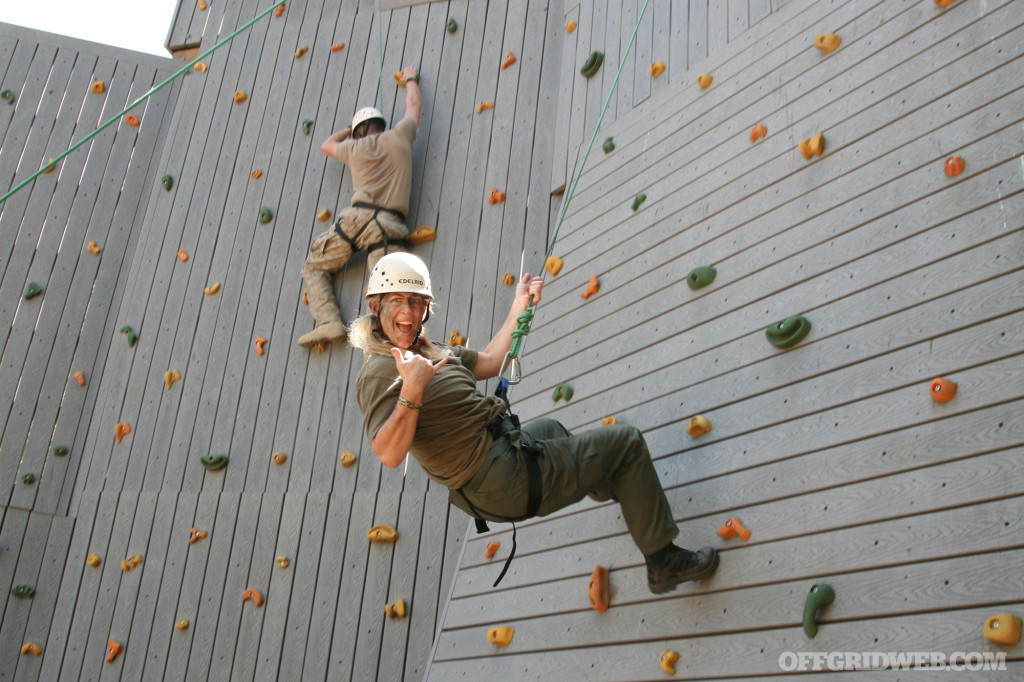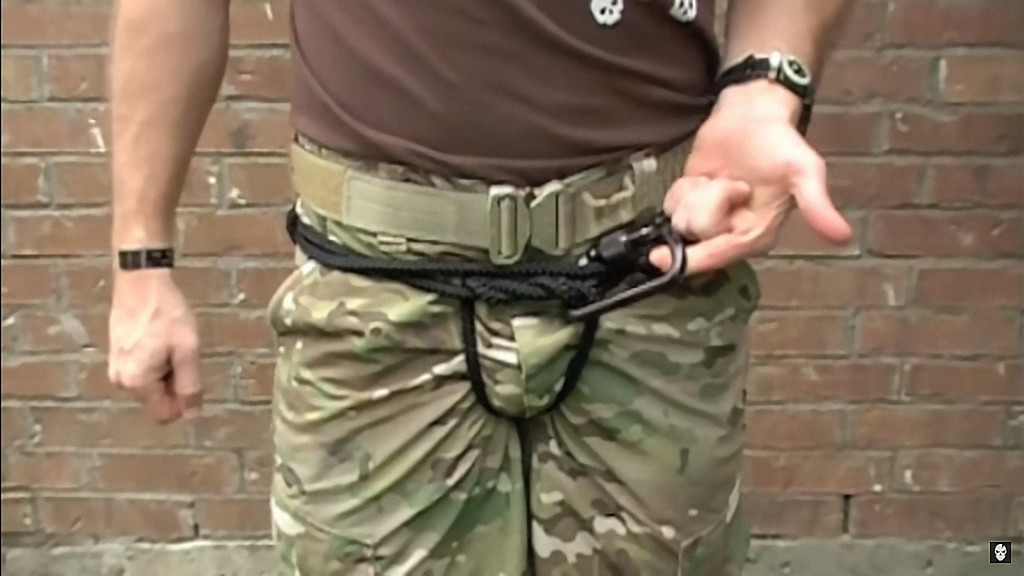In This Article
Ever look down from the balcony or roof of a tall building and feel uncomfortable? Your palms might sweat, and your stomach might churn, but from a logical standpoint you remain perfectly safe. In order to get back to terra firma, you need only walk down some stairs or push an elevator button. Nevertheless, acrophobia (the fear of heights) remains one of the most common personal anxieties of Americans.
However, what if taking the stairs or elevator was not an option? What if a structure fire, earthquake, or other dangerous event made it impossible to escape a building by normal means?
This sort of scenario may be unlikely, but it would be ideal to know how to descend to safety from that aforementioned balcony or roof. Unless you have some form of emergency rappelling device already prepared, you'll need to improvise with simpler materials. As with any other emergency survival technique, you'll want to be prepared and know what to do ahead of time.

Note: The techniques listed here are intended for emergency scenarios only, and should not be taken lightly. Climbing and rappelling are inherently dangerous, and if you think you may need to do either, you should consult with experienced climbers beforehand. Proper training and professional-grade gear is always your best option. We are not responsible if you fall and hurt yourself.

Looks easy, right? It is …as long as you're on a rock wall and supported by a guy off-camera holding the...
In an ideal world, you'll be 100-percent prepared when disaster strikes. If you need to escape a tall building via the window, you'd whip out your complete climbing rig (you know, the one you stashed for this exact scenario), strap on protective gear, and effortlessly descend the exterior of the building like a scene from Mission Impossible. Onlookers on the street below will applaud, and a beautiful woman in a red dress will be so impressed she'll hand you her phone number. Cue upbeat music, roll credits.
Outside of Hollywood fantasy land, you're likely not going to be an experienced mountaineer, and you won't have a complete climbing rig in your closet. If you're trapped on the third floor of an office complex, and some form of disaster has made the lower floors inaccessible, you'll need to find another way out.
If you're willing to spend several hundred dollars, you can look into a pre-made personal escape system, such as the Petzl EXO seen in the video above. These systems are specifically-designed as a compact and quick way to escape from a burning building. However, they still require mandatory training from an authorized source, and are generally designed specifically for firefighters. We're discussing emergency rappelling techniques, so we'll move on to some improvised methods instead.
A good climbing rig starts with a good harness. The harness makes sure your body stays attached to the rope, rather than plummeting to the ground.

The Swiss Seat is a DIY rappelling harness that can be assembled from about 12 feet of rope. Source: ITS Tactical
Speaking of rope, it is the only resource you absolutely cannot do without in an emergency rappelling scenario (aside from a strong anchor point, obviously). As you'll see later, you can even get away without a harness or carabiner in a pinch, but having a surplus of strong climbing rope on hand is mandatory. If you think there's any chance you might have to use these emergency techniques in your apartment or office, stow a substantial length of climbing rope in these locations.
Additionally, it's not unreasonable to stash a few carabiners with this rope. Get the real weight-rated kind, not the flimsy keychain kind. Unlike a climbing harness, both rope and carabiners can be used for other day-to-day purposes, so they won't just sit collecting dust in case of a specific scenario. In fact, we generally recommend including at least one large carabiner in a go-bag or bug-out bag—it has many uses, from self-defense to simply retaining your keys.
With only your rope and a few climbing carabiners, it is possible to rappel (aka abseil) and descend from a high place. One common method begins with tying a Swiss Seat rappelling harness. It's simple enough—all you'll need is a section of approximately 12 feet of climbing rope, and one large locking carabiner.
This video from ITS Tactical shows how to tie a Swiss Seat harness:
Now you have the harness, but you'll still need a way to descend in a controlled manner. Wrapping your rope haphazardly around a carabiner or your waist will result in one of two things:
If you can stash a real rappelling brake (aka belay), that's ideal. It will improve safety, and be much easier to use than any improvised system. However, here's what to do if you don't have a proper brake:
This “biner brake” just requires four more climbing-rated non-locking carabiners. This system allows you to slow your descent to a safe rate, even if you don't have a purpose-built brake on hand. Add two of these carabiners to your Swiss Seat rig or harness, slot two more around the first two, and work your rope through all four. If you're interested in learning more on how the carabiner rappelling brake works, check out this article on Climbing.com.
So, with the Swiss Seat, carabiner brake, and plenty of practice in a safe environment, you could rappel to safety. You'd need only the following items:
Remember how we said it's possible to rappel with only a rope? Here's what to do if you don't even have carabiners.
The Dülfersitz technique, named after German mountain climber Hans Dülfer, can serve as a last resort. It's pretty much guaranteed to cause some pain, but it can get you to safety in a pinch. It uses doubled-up rope wrapped in a “Z” along your groin, around your thigh, and over your shoulder.
Wrap the midpoint of the rope around a sturdy anchor, then feed the rope through your hands as you rappel to the ground. Your dominant hand grip and non-dominant arm positioning can regulate your speed. Once you're on the ground, you can pull on one end of the rope to recover it.
Note that you'll definitely want to wear gloves if possible, as the heat and friction can quickly blister your skin otherwise. Long sleeves and padding stuffed around your groin and collarbone can also help reduce the discomfort. Also note that this method can be quite dangerous—if your hand releases for any reason, you'll inevitably fall.
Whether you're using a complete rappelling rig, improvised Swiss Seat with carabiner brake, or the Dülfersitz technique with no gear whatsoever, you'll have some options for escaping an elevated location. Learning these emergency rappelling techniques may not eliminate the fear of heights, but it can greatly increase your chances of survival in a structure fire or other dangerous scenario.
 STAY SAFE: Download a Free copy of the OFFGRID Outbreak Issue
STAY SAFE: Download a Free copy of the OFFGRID Outbreak Issue
No Comments